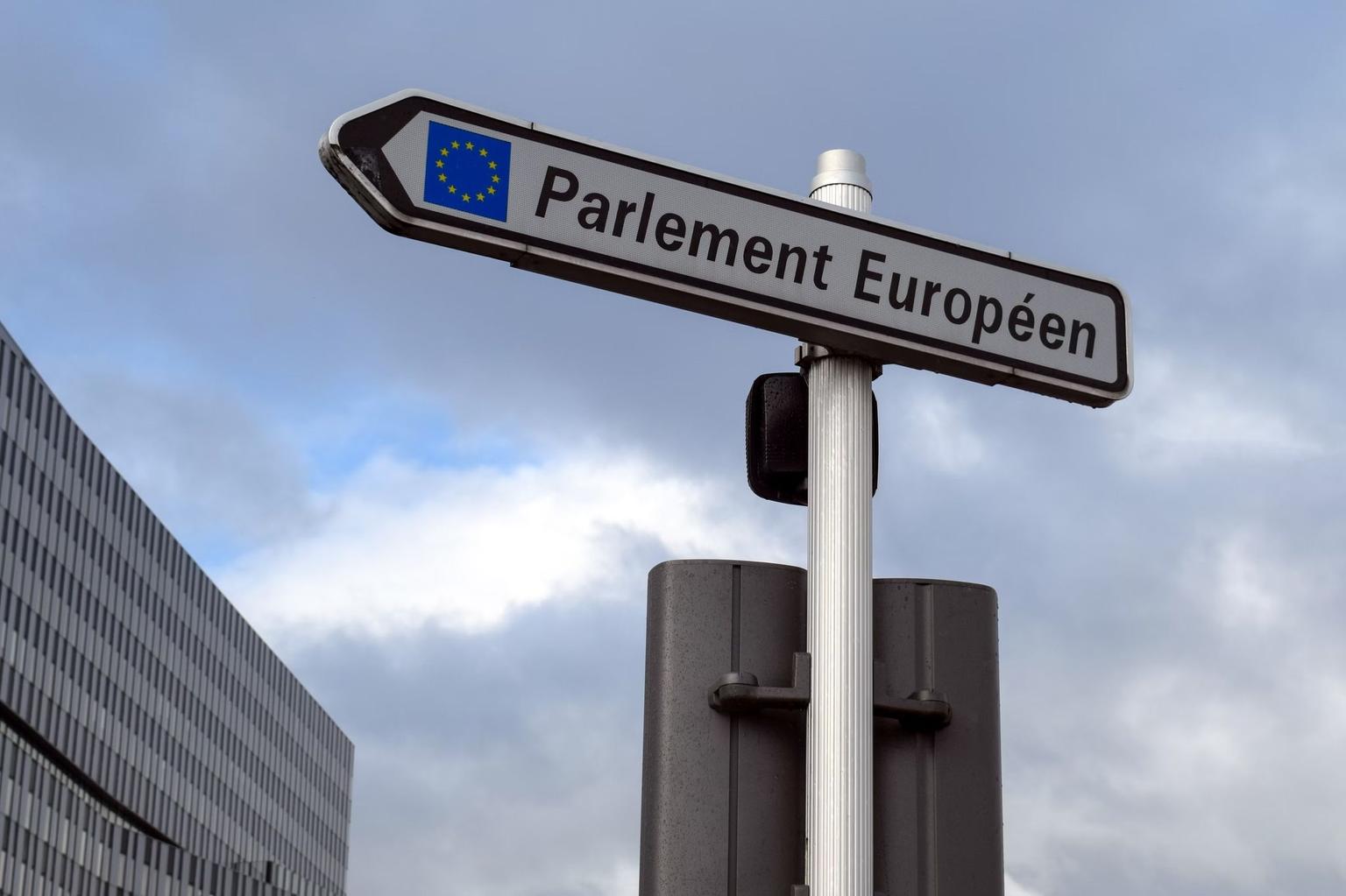EU Taxonomy Simplified: Key Changes in the Omnibus Package 2025 Explained
The EU Taxonomy will be significantly simplified by the Omnibus Package 2025. Fewer reporting...
By: Johannes Fiegenbaum on 5/25/25 4:50 PM

The Omnibus Package is part of the EU Commission’s regulatory simplification initiative. The goal is to ease existing reporting obligations without weakening the impact of the CSRD. The package complements existing initiatives such as the REFIT process and the EU Competitiveness Agenda. The CSRD rules are becoming simpler, more affordable, and will affect fewer companies. The EU Omnibus Package 2025 is expected to bring the following changes:
However, these are currently only proposals. They must still be adopted by the EU Parliament and Member States.
Conclusion: Less effort and lower costs—especially for SMEs and suppliers. Now is the time to adapt processes and strengthen ESG strategies. Early action is recommended as investors and supply chain partners increasingly expect robust sustainability data, even from companies not directly subject to the CSRD (source).
The CSRD changes can be divided into three main areas: thresholds, reporting obligations, and deadlines. Here are the details for each area.
The scope has been reduced by 80%. Small and medium-sized enterprises (SMEs) benefit from lower requirements, significantly reducing administrative burden. This adjustment allows SMEs to focus more on their ESG strategies while minimizing reporting efforts. The European Commission estimates that this change could save companies over €1.2 billion in compliance costs annually (source).
Important: For non-listed SMEs, the CSRD reporting obligation is completely eliminated. However, they are free to report voluntarily according to the simplified SME standard—for example, to prepare for future customer requirements or for investor relations. Voluntary reporting can be a strategic advantage, as many large buyers and investors are expected to request ESG data from their suppliers regardless of legal obligations (source).
The European Sustainability Reporting Standards (ESRS) have been revised to make them more streamlined. Sector-specific requirements have been removed, and the demands for external assurance have been relaxed. This means companies can focus on material sustainability topics rather than exhaustive disclosures, making compliance more manageable (source).
| Reporting Wave | Deadlines |
|---|---|
| First wave (NFRD companies) | Fiscal year 2024 → Submission 2025 |
| Second wave (companies ≥ 250 employees) | Fiscal year 2027 → Submission 2028 |
| Third wave (listed SMEs) | Fiscal year 2028 → Submission 2029 |
Additionally, a “Stop-the-Clock” regulation has been introduced. For the reporting years 2026 and 2027, companies will have more time to prepare for the new requirements. This delay was welcomed by business associations who argued that the original timeline was too ambitious for many firms (source).
The new CSRD regulations have concrete implications for German businesses. Here’s an overview of which changes affect corporations, mid-sized companies, and suppliers.
Under the new standards, many reporting obligations are eliminated, while key KPIs remain in place. What’s new is the differentiation of obligations based on company size. Large companies with more than 1,000 employees and annual revenue over €450 million must still report comprehensively on their EU Taxonomy KPIs. Many of these companies already have established reporting processes, and the focus will shift to ensuring data quality and consistency across the value chain (source).
This distinction supports the reduction targets of 25% for large companies and 35% for SMEs. Suppliers in particular benefit from the limitation of reporting obligations along the value chain.
Additionally, simplified audit requirements lead to lower costs for external audits. Small suppliers are relieved, as the cap on reporting obligations along the value chain prevents excessive information demands from larger companies. This is especially relevant in Germany, where many SMEs operate as suppliers to multinational corporations and have previously faced complex data requests (source).
Although many companies welcome the proposed changes, there are also critical voices. NGO networks and some members of parliament, as well as companies, warn that the planned relief for businesses could lead to a weakening of transparency obligations. In particular, the elimination of sector-specific ESRS and the raising of thresholds could mean that significant sustainability risks are no longer systematically disclosed. The European Coalition for Corporate Justice has argued that reducing the scope could undermine the EU’s climate and human rights ambitions (source).
A frequently voiced criticism:
“The planned simplifications risk undermining core principles of the CSRD—such as double materiality and the comparability of ESG data,” says a representative of the European Coalition for Corporate Transparency.
The proposed limitation of reporting obligations along the supply chain is also viewed differently. While it protects smaller suppliers, it could at the same time lead to reduced responsibility for large companies regarding their indirect emissions and human rights risks. Some sustainability experts warn that this could make it harder for investors and stakeholders to assess the true impact of large companies (source).
Furthermore, some experts criticize that the EU is giving in too much to business pressure with these proposals, thereby diluting the original goal of the CSRD—uniform, ambitious, and future-proof sustainability reporting.
Following the key CSRD changes, companies can leverage various tools and approaches to effectively implement the new requirements. These resources make it easier to collect and report sustainability data. The European Commission and EFRAG provide guidance and templates to help companies align with the new ESRS (source).
Modern ESG management systems provide companies with a platform to efficiently manage ESG data and create standardized reports. With these systems, companies can:
Implementing such systems before 2025 ensures that the necessary processes are established in time. Leading software providers are updating their solutions to reflect the latest ESRS requirements (source).

Fiegenbaum Solutions offers consulting services tailored specifically to the requirements of the CSRD. These are especially relevant for German mid-sized companies that must meet the thresholds and audit requirements described in Chapter 2. Services include:
The ESRS guidelines form the foundation for compliant reporting. Especially relevant are:
A key tool is the materiality analysis to prioritize important sustainability topics. To support this, EFRAG offers voluntary reporting templates. These templates are especially helpful for companies that want to align with the ESRS structure without having to build everything from scratch (source).
With the right combination of software, consulting, and clear guidelines, companies can efficiently ensure CSRD compliance by 2025.
Implementing the new CSRD requirements is achievable with a clear plan. Here are five steps to help you efficiently meet the requirements.
Start with a gap analysis. The goal is to identify gaps in your current sustainability report and align it with ESRS requirements. You should consider the following points:
This analysis forms the basis for the next steps.
Optimize your systems and processes with proven ESG management tools. Use ESG data management systems to make processes more efficient.
Key actions include:
External experts can speed up the process and provide targeted support. Fiegenbaum Solutions, for example, offers tailored ESG strategies based on double materiality. They help you integrate sustainability criteria into your business processes and select and implement suitable reporting software.
It remains to be seen how much the new thresholds will actually lead to less reporting in practice—because many companies along the supply chain will still need to provide ESG data despite not being required to. It also remains to be seen how uniformly the ‘Stop-the-Clock’ regulation will be implemented across Member States. According to industry analysts, the effectiveness of these reforms will depend on how national authorities interpret and enforce the new rules (source).
The EU Omnibus Package 2025 could bring significant relief in sustainability reporting. The most important change is the narrowing of the scope, which will exempt about 80% of the originally affected companies. Small and medium-sized companies in particular will benefit from this relief.
Key innovations include: fewer companies required to report, simplified ESRS requirements, and limitations on reporting along value chains.
Why early preparation is crucial: Companies that adapt in good time can benefit in several ways:
With my 5-step guide, you can successfully master the entire process—from gap analysis to audit preparation.
The simplified audit requirements and standards underline the EU’s balanced approach. Use the transition period to revise your processes and meet legal deadlines with ease.
All changes described here are based on the EU Commission’s proposal from spring 2025. Final adoption by Parliament and Council is still pending.
Here I answer the most frequently asked questions about the CSRD changes in 2025 in a concise format.
Not yet. It is a proposal from the EU Commission that still has to go through the ordinary legislative process. Changes are possible as it progresses. Only the postponement of deadlines with “Stop the Clock” has already been adopted (source).
The main possible changes from the EU Omnibus Package 2025 include:
Further details on thresholds, standards, and deadlines can be found in Chapters 2 and 3.
For the reporting years 2026 and 2027, reporting obligations for the second and third waves are postponed by two years each, giving companies more time to adapt their systems and processes (source).
The ESRS are being simplified, sector-specific requirements are being removed, and the demands for external assurance are being relaxed. A reduced, voluntary standard will be introduced for smaller companies. This is intended to make reporting more proportionate and less burdensome (source).

ESG & sustainability consultant specializing in CSRD, VSME, and climate risk analysis. 300+ projects for companies like Commerzbank, UBS, and Allianz.
More aboutThe EU Taxonomy will be significantly simplified by the Omnibus Package 2025. Fewer reporting...
The new EU omnibus measures simplify sustainability reporting and reduce the workload for...
The EU Taxonomy is a key tool of the EU to promote sustainable investments. It provides clarity on...